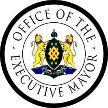A borer infestation places Joburg’s tree canopy at risk
11 April 2018
Johannesburg City Parks and Zoo (JCPZ), the custodians of the City of Joburg’s street trees have met with relevant stakeholders to discuss the recent reports of the outbreak and infestation of the Polyphagous Shothole Borer (PSHB). The Shothole Borer is a minute beetle that embeds its eggs deep in the inner layers of the tree. The larvae, once matured, then make their way out of the tree by tunneling holes. The holes resemble ‘gunshots’ that stifle the flow of nutrients through the veins of a tree, resulting in a tree that is visibly diseased from the top. This is eventually fatal for the tree and can destroy a cluster of adjacent trees once the young beetles start to nest.
Residents in Hurlingham, Craighall Park, Dunkeld, Sandton, Parkview, Kensington and Houghton have reported diseased trees in their yards and on the street. The likelihood of the infestation being more widespread has not been confirmed, but is a possibility.
JCPZ is working closely with institutions such as the Forestry and Agricultural Biotechnology Institute (FABI) to survey the extent of the spread of the infestation, and is set to commence a chemical-controlled trial in Hurlingham.
The Member of the Mayoral Committee (MMC) for Community Development in the City of Joburg, Councillor Nonhlanhla Sifumba is appealing to communities to report diseased trees to [email protected]. “We are in the process of identifying the extent of the infestation of the Shothole Borer to the tree canopy of the City of Joburg, and the environment as a whole in order to mitigate the far reaching implications” stated Sifumba.
While the beetle has been devastating in other parts of the world, including Asia and California in the USA, Sifumba was cautious not to cause panic until the true extent of the infestation was ascertained reinforcing that, “Pine trees seem to display a natural repellant to the Shothole Borer, and we are therefore very fortunate that the paper manufacturing industry that is dependent on pine is not affected”.
“Pesticides are not effective as well, because the beetle bores deep into the wood. The only known method of managing the spread is to cut down infested trees hosting the beetle, and to dispose of them in a controlled manner, through burning,” Sifumba explained.
Symptoms vary in different tree species - from patches of white powdered wood called frass to blotches of oozing resin or gumming. This weakens the trees’ immune system causing stress and die-back on the bark surrounding the hole.
Reports received indicate that indigenous trees such as the Acacia Sebreana, commonly referred to as the Paperbark, native to Southern Africa, have also been affected.
MMC Sifumba, advised that JCPZ has established a committee to source the necessary resources to:
- Undertake a thorough assessment to understand the true extent of the infestation;
- Train personnel to monitor, dispose of trees and to identify the borer and other fungal hosts that accompany the beetle;
- Put in place a designated area for the controlled dumping and burning of trees; and
- Ensure that a tree replacement strategy is in place.
MMC Sifumba, reaffirmed the commitment of the City, by assuring residents that “we will work with all bodies and concerned groups to ensure that we tackle the infestation collectively to preserve and protect Joburg’s manmade forest”.
Issued by Jenny Moodley, Spokesperson, Johannesburg City Parks and Zoo, 11 April 2018

